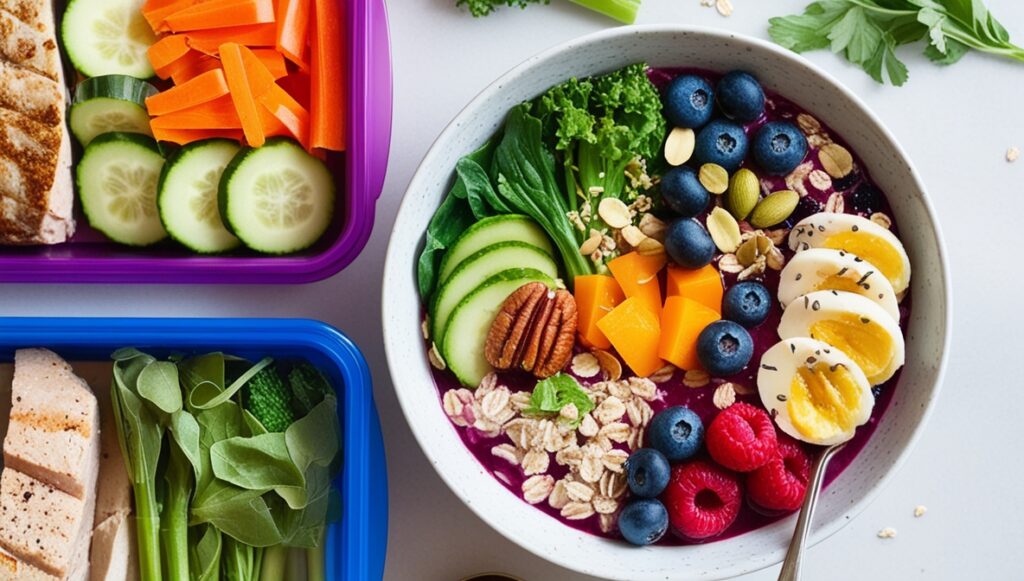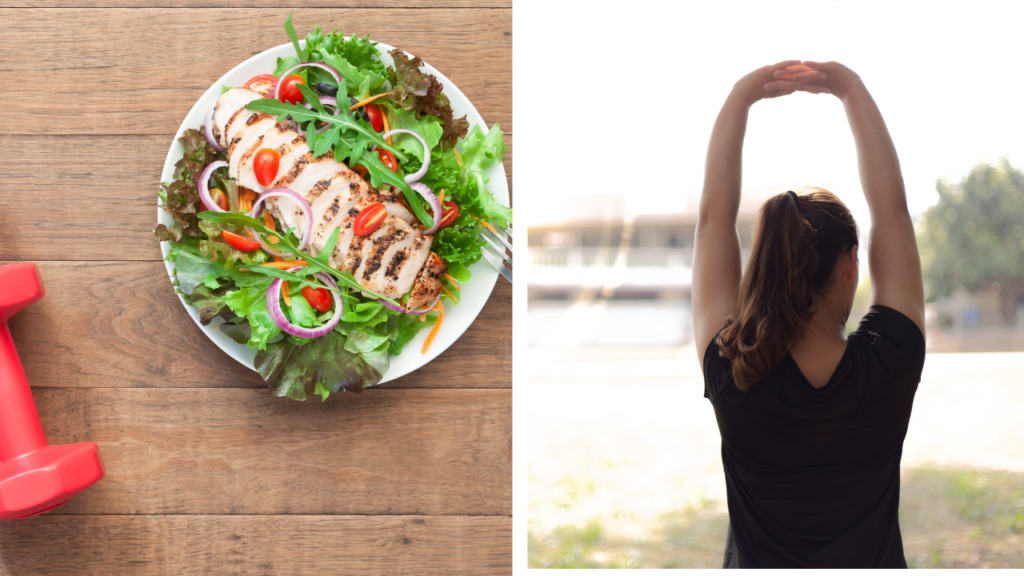Creating a custom diet and exercise plan is the key to achieving your fitness goals, whether they involve weight loss, muscle gain, or overall health improvement. It’s rare for a one-size-fits-all strategy to diet and fitness to be effective, therefore it’s critical to customize your plan to your unique requirements, tastes, and way of life. This article will guide you through the process of creating a customized diet and fitness schedule that will put you in the best possible position to succeed.
Understanding Your Goals
The first step in creating a custom diet and exercise plan is to define your goals clearly. Are you trying to get healthier overall, lose weight, gain muscle, or increase your endurance? Every objective necessitates a unique diet and workout plan.
Setting SMART Goals
Time-bound, Relevant, Specific, Measurable, and Achievable are the elements of SMART goals. Setting SMART goals will help you stay motivated and concentrated. Instead of just saying, “I want to lose weight,” a SMART goal may be, “I want to lose 10 pounds in three months by following a balanced diet and exercising five times a week.”
Assessing Your Current Condition
Examine your present physical state before beginning your personalized plan. This involves taking measurements of your muscle mass, weight, body fat percentage, and degree of fitness. Knowing where you are coming from will enable you to monitor your development and make the required corrections as you go..
Customizing Your Diet Plan
A balanced diet is crucial to achieving your fitness goals. A customized diet plan takes into account your unique preferences and way of life while making sure you get the proper nutrients to sustain your body.

Determining Your Caloric Needs
Your age, sex, height, weight, and degree of activity all affect how many calories you need. To calculate your Basal Metabolic Rate (BMR), or the amount of calories your body requires at rest, use an online calculator. Then, to find your Total Daily Energy Expenditure (TDEE), multiply your BMR by an activity factor. Aim to eat less than your TDEE in order to lose weight. Eat more if you want to grow muscle.
Macronutrient Breakdown
Your body needs macronutrients—fats, proteins, and carbohydrates—to function properly and to help you reach your fitness objectives. Here’s how to choose the ideal ratio:
- Carbohydrates: Give you energy for daily tasks and exercise. Try to get 40–50% of your daily calories from carbohydrates if you want to lose weight. 50–60% for muscular gain.
- Proteins: necessary for the growth and repair of muscles. Try to get 25–30% of your calories from protein each day.
- Fats: Essential for the synthesis of hormones and general health. Try to get 20–30% of your daily energy from fat.
Choosing the Right Foods
Select whole, unprocessed foods that are nutrient-dense. Focus on:
- Proteins: Lean meats, fish, eggs, dairy, beans, and legumes.
- Carbohydrates: Whole grains, fruits, vegetables, and legumes.
- Fats: fatty fish, avocados, almonds, seeds, and olive oil.
Meal Planning and Preparation
To make sure you stay on track, schedule your meals in advance. Think about preparing meals for the week by cooking in bulk. Time will be saved, and there won’t be as much temptation to eat bad stuff.
Hydration
It’s essential to stay hydrated for general health and effectiveness. Try to consume 8 to 10 glasses of water or more if you exercise vigorously each day.
Customizing Your Exercise Plan

A well-rounded fitness regimen that includes cardiovascular, strength, and flexibility training is essential. Plan according to your goals, preferences, and degree of fitness.
Related Article: What is the Relationship Between Exercise and Diet
Cardiovascular Exercise
Cardiovascular exercise is crucial for calorie burning and heart health. You can adjust the duration and intensity based on your objectives:
- Weight Loss: Every week, try to get in 150–300 minutes of moderate-intense or 75–150 minutes of high-intensity cardio. Swimming, cycling, jogging, and brisk walking are among the exercises.
- Muscle Gain: Include brief intervals of high-intensity interval training (HIIT) to preserve cardiovascular health while burning the necessary number of calories for muscular growth.
Strength Training
Strength training builds muscle, increases metabolism, and strengthens bones. Focus on:
- Compound Movements: exercises including squats, deadlifts, bench presses, and pull-ups that target various muscular groups.
- Progressive Overload: Increase the weight or resistance gradually to keep your muscles challenged.
- Frequency: Aim for two to three sessions of strength training per week, with each session focusing on a different muscle group.
Flexibility and Mobility
Your range of motion will be improved and injuries can be avoided with flexibility and mobility exercises. Include:
- Stretching: Hold stretches for a minimum of 30 seconds each after working out.
- Pilates or yoga: These exercises enhance balance, strength, and flexibility.
Rest and Recovery
For overall growth and muscular healing, rest is essential. Make sure you receive:
- Sleep: Try to get seven to nine hours of good sleep every night.
- Rest Days: To give your muscles time to heal, try to include one or two rest days per week.
Monitoring Your Progress
Monitoring your development enables you to stay inspired and modify your approach as needed. Here are some pointers:
- Journaling: Record your daily feelings, meals, and workouts in a fitness journal.
- Frequent Check-Ins: Review your fitness levels, body measurements, and weight every few weeks.
- Modifications: Adapt your caloric intake, macronutrient ratios, and exercise intensity as necessary based on your progress.
Overcoming Challenges
It can be difficult to follow a personalized diet and exercise regimen. Here are some methods to help you keep on course:
Staying Motivated
- Set Milestones: Divide your primary objective into more manageable targets.
- Reward Yourself: After you accomplish a goal, treat yourself to something other than food, such a massage or a new gym attire.
- Find Support: To keep yourself accountable, find a workout partner or sign up for a fitness class.
Handling Plateaus
It’s normal to hit plateaus in your fitness journey. When progress stalls:
- Modify Your Routine: Vary your exercises to put your body through fresh challenges.
- Examine Your Nutrition: Make that your calorie surplus (for muscle gain) or deficit (for weight loss) is still present.
- Stay Patient: Recall that consistency is essential and that development takes time.
Dealing with Setbacks
Setbacks happen, but they don’t mean failure. Here’s how to bounce back:
- Forgive Yourself: Let go of regrettable meals or neglected exercise sessions. As quickly as you can, get back on course.
- Make Lessons from Your Mistakes: Determine the reason for the setback and devise plans to prevent it in the future.
- Stay Positive: Concentrate on your advancement and never forget why you began.
Tailoring Your Plan Over Time
Your requirements and objectives may alter as you advance. Update your plan often to account for your current circumstances:
Reassessing Your Goals
Review your objectives every few months and make adjustments in light of your advancements. Once you’ve accomplished your first objective, set a new one to keep pushing yourself.
Updating Your Diet
Your body will vary throughout time, and so will your needs for calories and macronutrients. Recalculate your TDEE on a regular basis and modify your diet as necessary. Try a variety of cuisines and meal times to determine what suits you the best.
Modifying Your Exercise Routine

By changing up your workout programme on a regular basis, you can avoid falling into a fitness rut. To keep things fresh and demanding, try alternative exercises, up the ante on the intensity, or concentrate on other muscle areas.
Seeking Professional Guidance
Creating a custom diet and exercise plan can be complex. Consider seeking professional guidance from:
A Registered Dietitian
A registered dietitian can provide personalized nutrition advice and help you develop a diet plan that meets your needs and goals.
A Personal Trainer
A personal trainer may create a training programme just for you, make sure you’re using the right form, and maintain your motivation.
Healthcare Professionals
Before beginning any new fitness regimen or diet, especially if you have any underlying medical concerns, speak with your doctor.
For More Inf. visit nutrifyboost
Conclusion
Creating a custom diet and exercise plan tailored to your unique needs and goals is the key to long-term success in your fitness journey. You may become and stay a healthier, fitter version of yourself by knowing what you want to achieve, tailoring your food and exercise regimen, keeping track of your progress, and conquering obstacles. Recall that patience and consistency are crucial. If you stick to your strategy, you’ll get the outcomes you’re hoping for.


1 thought on “Custom Diet and Exercise Plan | Tailored for Your Success”